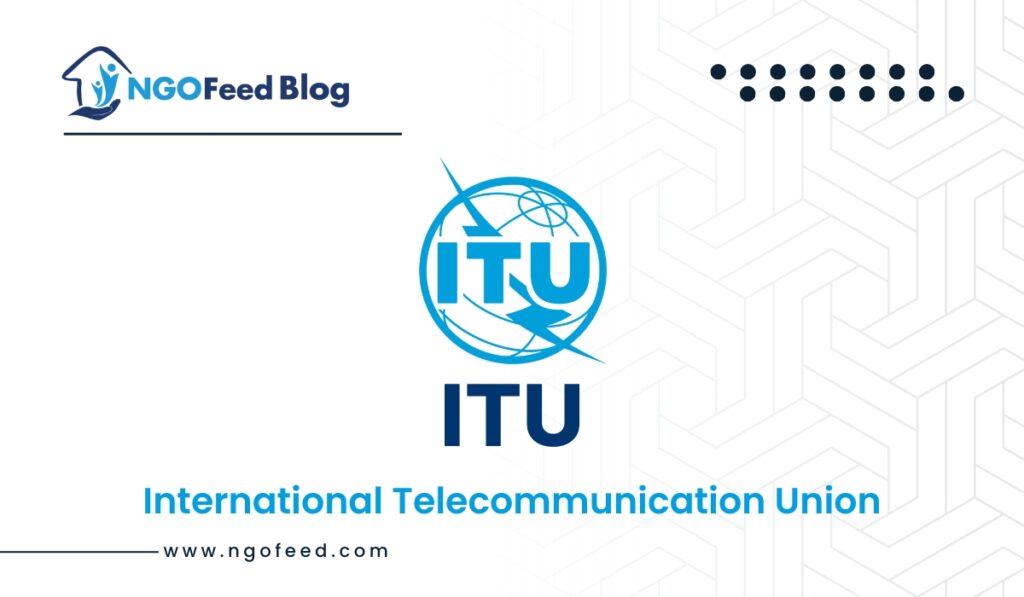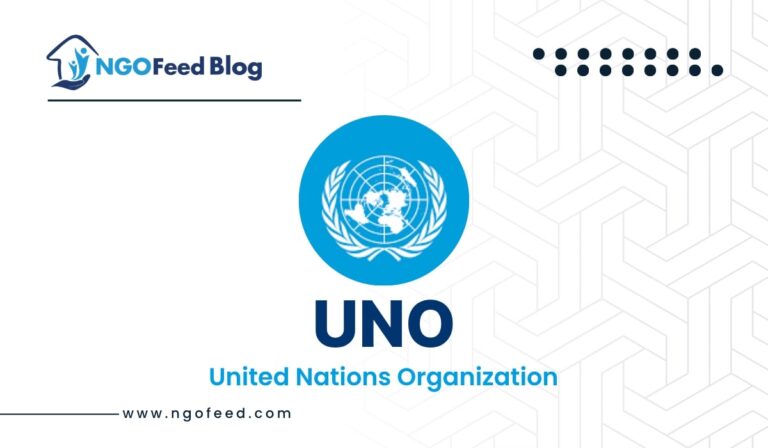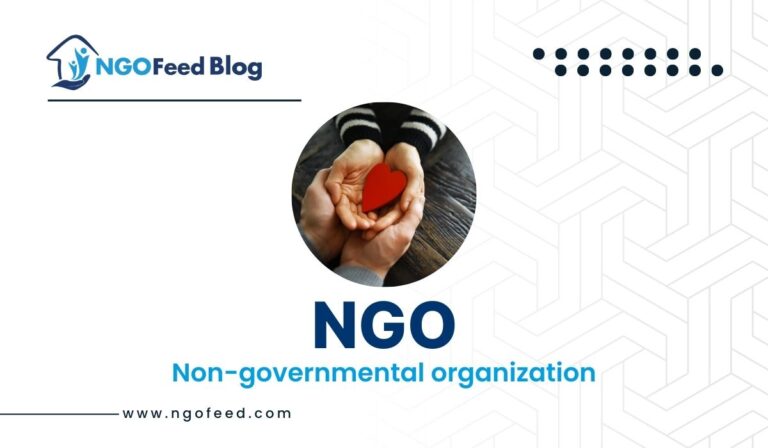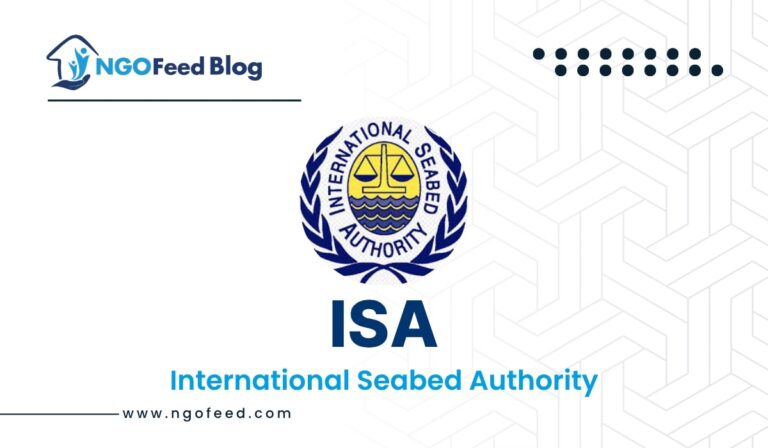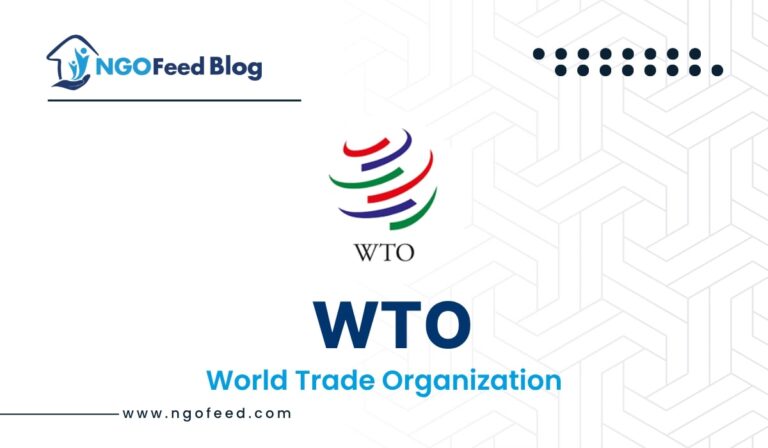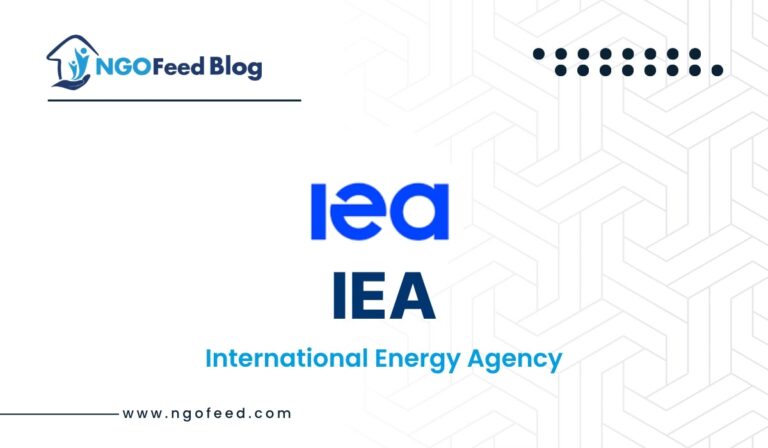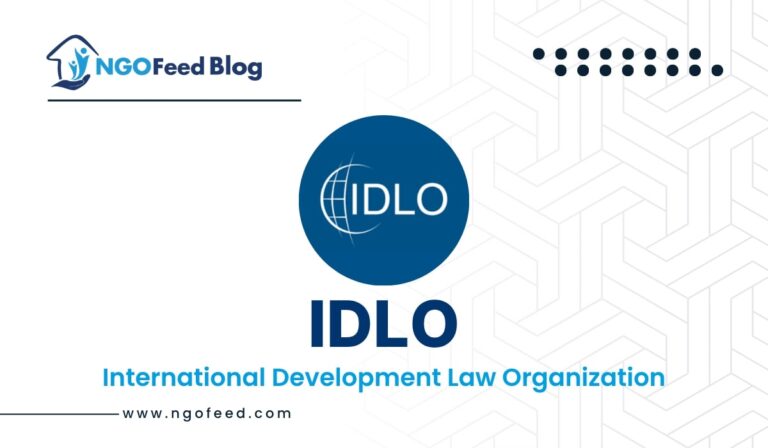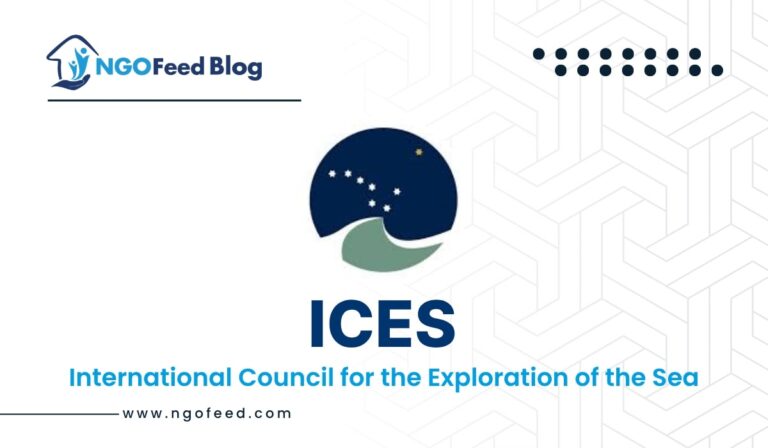ITU Full Form: The International Telecommunication Union (ITU) is the UN-specialized agency for information and communication technologies – ICTs. Founded in 1865 to facilitate international connectivity in communications networks, they allocate global spectrum and satellite orbits, develop the technical standards that ensure networks and technologies interconnect, and strive to develop access to ICTs in underserved communities.
The ITU was founded to assist countries in connecting telegraphic networks, but its mandate has steadily expanded with the introduction of new communication technologies; it adopted its current name in 1932 to reflect its expanded responsibilities over radio and telephone. Throughout this article, you will learn about ITU, its work, structure, history, etc.
Table of Contents
ITU Overview
This section briefly summarises ITU (International Telecommunication Union). Let’s have a look.
| ITU | International Telecommunication Union |
| Headquarters | Geneva, Switzerland |
| Formation | 17 May 1865; 156 years ago |
| Parent organization | United Nations Economic and Social Council |
| Type | United Nations specialized agency |
| Website | https://www.itu.int/ |
| Member | 193 countries |
What is ITU?
The International Telecommunication Union (ITU) is a specialised agency of the United Nations responsible for all issues concerning information and communication technologies. The ITU’s initial mission was to help connect telegraphic networks between countries, but its mandate has steadily expanded with the arrival of new communications technologies; it adopted its current name in 1934 to reflect its expanded responsibilities over the radio and, thus, the telephone. Based in Geneva, Switzerland, the ITU’s global membership includes 193 countries and approximately 900 business, academic, international, and regional organisations.
History
The International Telegraph Union inspired the establishment of the ITU in Paris in 1865. It was given its current name in 1932 and 1947 and became a specialised agency of the United Nations. Although it began with the telegraph, ITU’s work now spans the entire ICT sector, from digital broadcasting to the web and mobile technologies to 3D TV. A public-private partnership since its inception, ITU now has a membership of 193 countries and a few 700 private-sector entities. The International Telecommunication Union (ITU) is headquartered in Geneva, Switzerland, with twelve regional and area offices worldwide.
Read also:
| WOCCU Full Form | WCO Full Form |
| ICSID Full Form | MIGA Full Form |
| IFC Full Form | IDA Full Form |
| IBRD Full Form | IDLO Full Form |
ITU Membership
ITU has three Sectors: Radiocommunication (ITU-R), Telecommunication Standardization (ITU-T), and Telecommunication Development (ITU-D). Each sector has its unique characteristics and activities. Companies or organizations may become members of one or more Sectors of ITU and may join as a Sector Member or Associate.
- The strategic goal of the ITU Telecommunication Standardization Sector (ITU-T) is threefold and includes:
- To develop interoperable, non-discriminatory international standards (ITU-T Recommendations)
- To assist in bridging the standardization gap between developed and developing countries
- To extend and facilitate international cooperation among international and regional standardization bodies
Objectives
- Coordinating/International cooperation
- Producing global standards
- Bridging the standardization gap
- Informing/Disseminating information
ITU Sectors
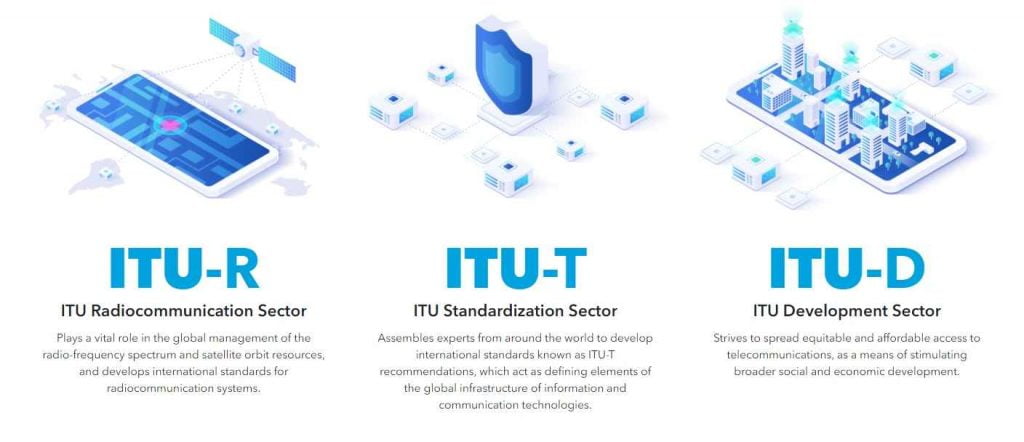
Becoming a Member State of the ITU
Procedures for joining the International Telecommunication Union (ITU) depend on whether a country is already a UN member or not:
To UN Member States
- Follow the rules set by the International Telecommunication Union (Geneva, 1992) and its constitution.
- Deposit the document of acceptance with the ITU Secretary-General at the same time. This should cover both the Constitution and the Convention.
For countries that aren’t UN members
- Get two-thirds of the Union’s member states to agree to your entry.
- Once approved, follow the same steps for joining as UN Member States and send a single paper to the ITU Secretary-General as the instrument of entry.
Governance of ITU
ITU members are as follows:
| Region A (Americas) 9 Seats | Region B (Western Europe) 8 Seats | Region C (Eastern Europe and Northern Asia) 5 Seats | Region D (Africa) 13 Seats | Region E (Asia and Australasia) 13 Seats |
| Argentina | France | Azerbaijan | Algeria | Australia |
| Bahamas | Italy | Czech Republic | Burkina Faso | China |
| Brazil | Germany | Poland | Egypt | India |
| Canada | Greece | Romania | Ghana | Indonesia |
| Cuba | Hungary | Russia | Ivory Coast | Iran |
| El Salvador | Spain | – | Kenya | Japan |
| Mexico | Switzerland | Morocco | Kuwait | |
| United States | Turkey | Nigeria | Pakistan | |
| Paraguay | Rwanda | Philippines | ||
| Senegal | Saudi Arabia | |||
| South Africa | South Korea | |||
| Tunisia | Thailand | |||
| Uganda | United Arab Emirates |
Administrative Regions
- Region A – The Americas (35 Member States)
- Region B – Western Europe (33 Member States)
- Region C – Eastern Europe and Northern Asia (21 Member States)
- Region D – Africa (54 Member States)
- Region E – Asia and Australasia (50 Member States)
Conclusion
The International Telecommunication Union (ITU), which is part of the UN, is like the centre of new ideas in global communication. It has been on a journey since its start in 1865, including everything from telegraphs to cutting-edge tech like 3D TV. ITU works hard to make sure that everyone, everywhere can use the newest communication tools. It has 193 partner countries and a lot of private-sector players. In this modern age, it’s important that no one falls behind.
Read also:
Frequently Asked Questions (FAQs)
What does ITU stand for?
International Telecommunication Union
What is the purpose or Objective of ITU?
The overall objectives of the International Telecommunication Union (ITU) are: Coordinating/International cooperation
Producing global standards Bridging the standardization gap informing/Disseminating information.
In which sector does ITU work?
The ITU is organized into three sectors – Radiocommunication, Telecommunication Standardisation and Telecommunication Development – ITU-R, ITU-T and ITU-D.

